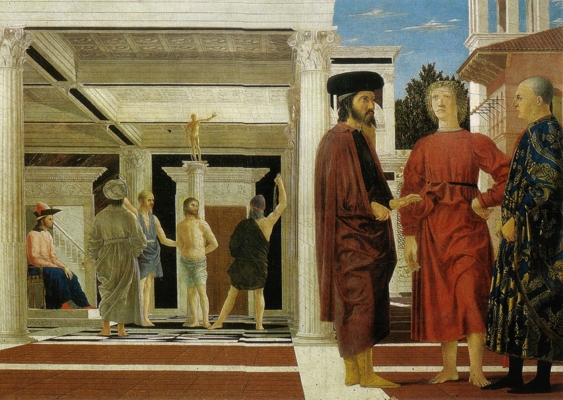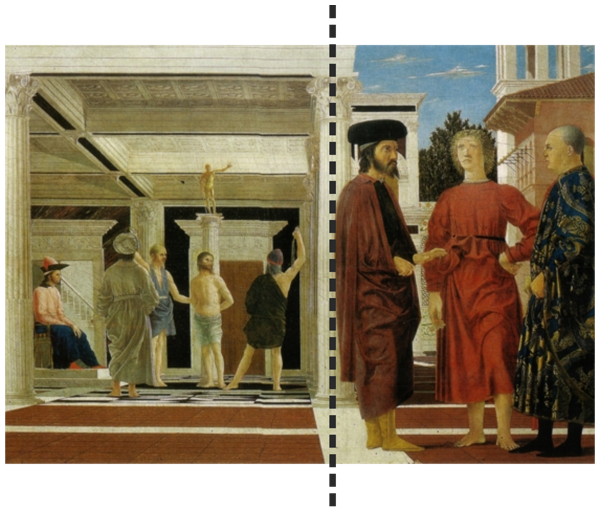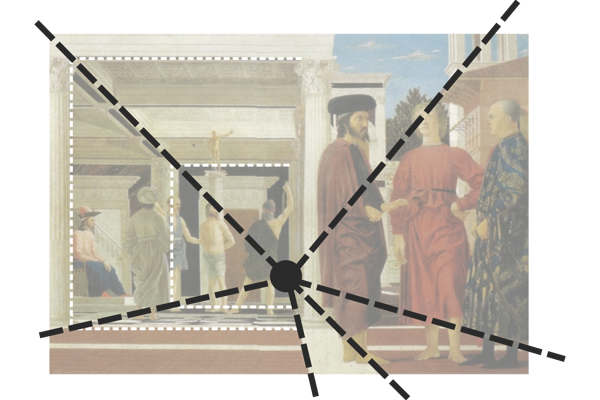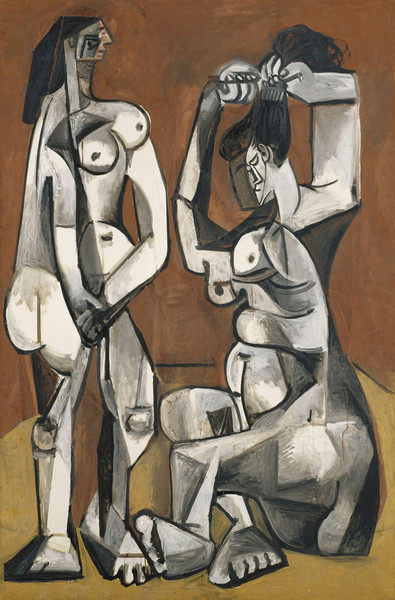This post is part of a series of blog posts called Noteworthy Artists and
Artworks. For more information about the series, please read Series Breakdown:
Noteworthy Artists and Artworks. You can find the link at the end of this post.
The way Picasso and della Francesca have incorporated and utilise space in their
work has affected and expanded my understanding of it. The most notable thing is
their ability to depict space in two and three dimensions in the same
image. And, it is this which I intend to focus on for the remainder of this
post.
Piero della Francesca was an Italian Renaissance painter. His birth is believed
to have been around 1420 A.D. but it is not known where. He died in Sansepolero,
Italy in 1492 A.D.
Throughout his life, his peers knew him as a mathematician and geometer. These
days, however, most know him as an artist. And, for the purpose of this post,
that it the area I will focus on most. To be more precise, I will focus on one
of his paintings: The Flagellation of Christ (fig. 1). It is currently on
display at the Galleria Nazionale della Marche, Urbino.
 Figure 1: The Flagellation of Christ, probably 1468–1470 by Peiro della Francesca
Figure 1: The Flagellation of Christ, probably 1468–1470 by Peiro della Francesca
From a personal point-of-view, della Francesca's understanding of figurative and
literal space is what I am most interested in. When I say "figurative", I mean
the depiction aspect of the image (the buildings, people Etc.). The "literal"
part is the act of splitting the painting surface in two (via the composition of
the image). This, in-effect, leaves us with two images in one.
To help explain my point, please consider the image below (fig. 2 ). As you can
see, the image has a clear divide about halfway along the horizontal axis. This
has caused the image to split into two sections. He has traversed the panel
(I.E. canvas) in a literal sense (horizontally). On top of that, he has managed
to portray a sense of three-dimensional depth on a two-dimensional plane via
perspective projection (A.K.A. perspective drawing). You should find an
additional image (fig. 3) below to help demonstrate this point.
 Figure 2: della Francesca has split the image into two sections along the horizontal axis.
Figure 2: della Francesca has split the image into two sections along the horizontal axis.
 Figure 3: With the application of perspective projection, the image has a three-dimensional quality to it.
Figure 3: With the application of perspective projection, the image has a three-dimensional quality to it.
The next image I will focus on is called Women at The Toilet (fig. 4 ) by
Pablo Picasso. For those unfamiliar with Picasso, he was a Spanish artist know
most of all as one of the founding fathers of Cubism. He was born 25th October
1881 A.D. in Málaga, Spain and died 8th April 1973 A.D. in Mougins,
France. Women at The Toilet is part of the collection at Musée National
Picasso, Paris.
 Figure 4: Women at The Toilet, 1956 by Pablo Picasso
Figure 4: Women at The Toilet, 1956 by Pablo Picasso
When looking at pieces like Women at The Toilet (fig. 4), you get a sense of
movement and positioning through Picasso's cubist exploits. What is impressive
(to me at least) is he has achieved it in a static environment. For example, if
you look at the woman on the right, there is an expectation for her hands to
move. You expect the comb to run through her hair and an odd sensation arises
when it does not. Her hands, the comb and hair all remain fixed in place. This
is were your mind starts to fill in the gaps and applies the movement
itself. The same thing occurs with the woman on the left. You anticipate her
body to turn but it never does. Things become more complicated when your mind
starts to make her turn towards and away from you at the same time. Of course,
this is just one approach to addressing such concerns. But, it was Picasso and
this piece (amongst others) which piqued my curiosity. After coming across work
like this, my understanding of movement and positioning began to change. This
was especially true in two-dimensional contexts.
If I may, I would now like to end with an aside. It does not relate to what I
said above in an exact manner but it is in keeping with the spirit of it. As a
maker, I am intrigued in movement, location and positioning (in space). How
things are perceived has a dependency on where they are viewed. This can be said
for both parties: the artist and the artwork.
Links